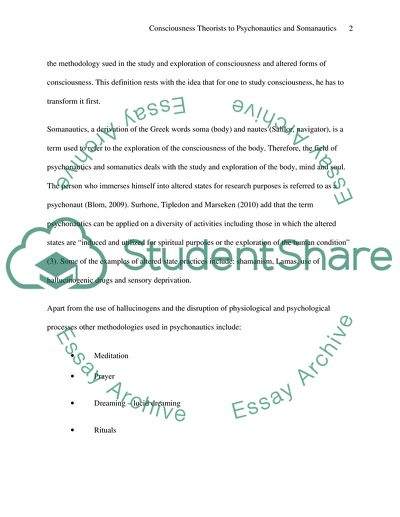Cite this document
(Contribution of Consciousness Theorists to Psychonautics and Term Paper - 1, n.d.)
Contribution of Consciousness Theorists to Psychonautics and Term Paper - 1. Retrieved from https://studentshare.org/psychology/1575134-choose-two-theorists-of-consciousness-who-write-from-different-perspectives-explore-and-evaluate-their-respective-contributions-to-the-discipline-of-psychonautics-and-somanautics
Contribution of Consciousness Theorists to Psychonautics and Term Paper - 1. Retrieved from https://studentshare.org/psychology/1575134-choose-two-theorists-of-consciousness-who-write-from-different-perspectives-explore-and-evaluate-their-respective-contributions-to-the-discipline-of-psychonautics-and-somanautics
(Contribution of Consciousness Theorists to Psychonautics and Term Paper - 1)
Contribution of Consciousness Theorists to Psychonautics and Term Paper - 1. https://studentshare.org/psychology/1575134-choose-two-theorists-of-consciousness-who-write-from-different-perspectives-explore-and-evaluate-their-respective-contributions-to-the-discipline-of-psychonautics-and-somanautics.
Contribution of Consciousness Theorists to Psychonautics and Term Paper - 1. https://studentshare.org/psychology/1575134-choose-two-theorists-of-consciousness-who-write-from-different-perspectives-explore-and-evaluate-their-respective-contributions-to-the-discipline-of-psychonautics-and-somanautics.
“Contribution of Consciousness Theorists to Psychonautics and Term Paper - 1”, n.d. https://studentshare.org/psychology/1575134-choose-two-theorists-of-consciousness-who-write-from-different-perspectives-explore-and-evaluate-their-respective-contributions-to-the-discipline-of-psychonautics-and-somanautics.


